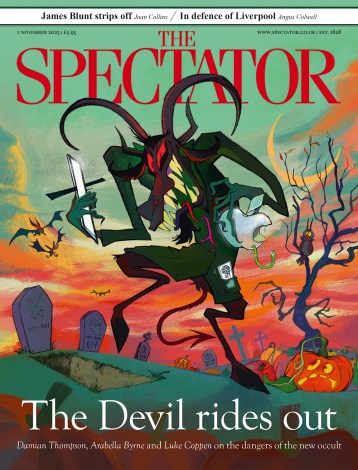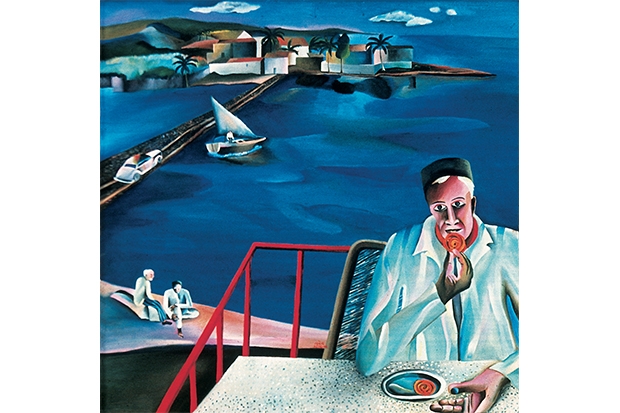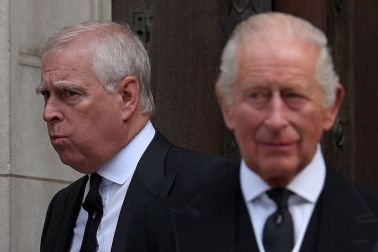Timothy Hyman’s remarkable new book makes the case for the relevance of figurative painting in the 20th century, a period effectively dominated by modernist abstraction. He identifies an alternative tradition of potent human-centred painting, coming out of Cubism and Expressionism and tracing its lineage through Chagall and Leger, the Italians Carlo Carra and Mario Sironi, the Germans Max Beckmann, Otto Dix and George Grosz, to Stanley Spencer, Edward Burra and William Roberts.
Hyman claims many of the great independent artists for his argument — Balthus, Kirchner, Bonnard, Ensor — and registers them as resistance fighters in the war of influence and received opinion. He is not interested in traditionalist academic painting or straight realism, being more concerned with ‘artists who create narratives and microcosms’ who also wanted to renew pictorial language and explore the hard-won freedoms of Modernist painting. (Chief among these freedoms is the ‘licence to remain unfinished, to retain the evidence of process and making, to conjure up suggestion and ambiguity’.)
The overwhelming success of abstract painting was based on the belief that representation was somehow no longer relevant to humanity’s concerns, that it had failed mankind by not allowing access to the spiritual or metaphysical. Figuration was seen as provincial and reactionary, and great originals such as Stanley Spencer were dismissed as wilfully idiosyncratic. Hyman’s book, which he describes as ‘the history of a collective retrieval’, offers an alternative reading of 20th-century art by stressing the period’s stylistic diversity and repositioning certain marginalised figures near the epicentre of creative endeavour. It is particularly heartwarming to see Ken Kiff and R.B. Kitaj given such prominence, along with Alice Neel, Paula Modersohn-Becker and Bhupen Khakhar.
The book is really a lengthy series of meditations on individual paintings, full of the kind of wisdom acquired during a lifetime’s looking and reading and thinking. Hyman is himself a successful figurative painter, but is perhaps more widely known as a writer, and particularly as the author of monographs on Bonnard and Sienese painting. In The World New Made he focuses on some 50 painters who epitomise the figurative project. Beguilingly illustrated with more than 150 colour plates, many of them with usefully detailed captions, the book’s central debate is how an artist organises and interprets reality.
The examples Hyman selects to illustrate his thesis are extremely apt if sometimes unexpected. Carra’s ‘Pine Tree by the Sea’ (1921), with its debt to Giotto, is magnificent, as are the etchings Chagall made for Gogol’s Dead Souls, resulting in what Hyman dubs ‘the greatest illustrated book of the 20th century’. It’s very good to see the American Marsden Hartley included here and represented by the marvellous portrait ‘Adelard the Drowned, Master of the Phantom’. Also Nolde, Vuillard, Frida Kahlo and Philip Guston, who turned figurative late in life after a successful career as an Abstract Expressionist. These are real painters, using the materials of their profession with passion, inventiveness and originality. As Hyman writes: ‘Like true poetry, true painting goes deeper than concepts.’
Inevitably I don’t find myself in sympathy with all of Hyman’s choices, and I cannot share, for instance, his interest in the work of Charlotte Salomon. But this is Hyman’s pantheon, not mine, and the range of reference is impressive, the learning lightly worn and the book both illuminating and a delight to read and handle. Hyman is especially good on Leger, Beckmann, Ensor, Howard Hodgkin and Kitaj.

‘Child with Doll’, by Henri Rousseau (1904)
This is richly evocative and thought-provoking writing, refreshingly uncluttered with footnotes. (Sources are listed at the end of the book, by chapter.) In terms of timing, its appearance could scarcely be bettered. With a major survey of Abstract Expressionism currently at the Royal Academy, a retrospective of Bhupen Khakhar at Tate Modern and an Ensor exhibition now open (also at the RA), the debate is played out in the capital’s public galleries. I love the best abstraction (some of which is showing in the RA’s Ab Ex show), but I also love the best figuration, and it’s clear that figurative work has long been regarded as the poor relation of what was generally considered to be the most radical and avant-garde art — abstraction.
It’s time that the balance was redressed, and Timothy Hyman’s scholarly and enjoyable book sets about the task with great vigour. The quality of the writing makes the reader want to look again and more closely at the artists discussed. The World New Made will take a special place on my bookshelves, next to that other perceptive and celebratory text, Christopher Neve’s Unquiet Landscape. Hyman does for figure painting what Neve did for landscape, and both enrich our understanding of some of the best art of the 20th century.






Comments